Abstract
In addition to inhibiting replicative DNA synthesis in HeLa cells, novobiocin has a severe effect on the cellular response to UV irradiation, reducing the number of breaks made in pre-existing DNA by the excision repair process. The inhibition of UV repair by novobiocin is reflected in enhanced UV-killing of these cells. Rejoining of DNA after X irradiation is not impaired by novobiocin. The recognition and removal of UV damage may require unwinding of the DNA by gyrase, which--in bacteria--is the target for novobiocin.
Full text
PDF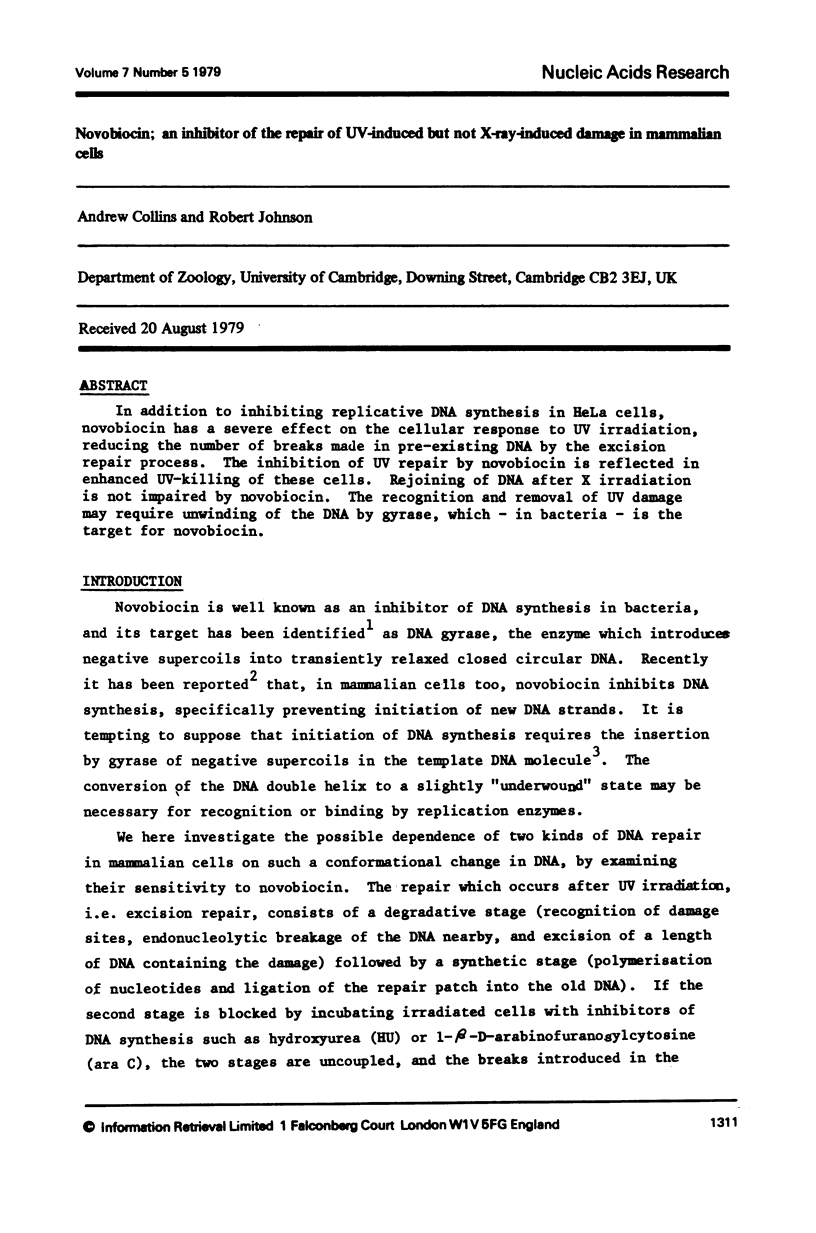
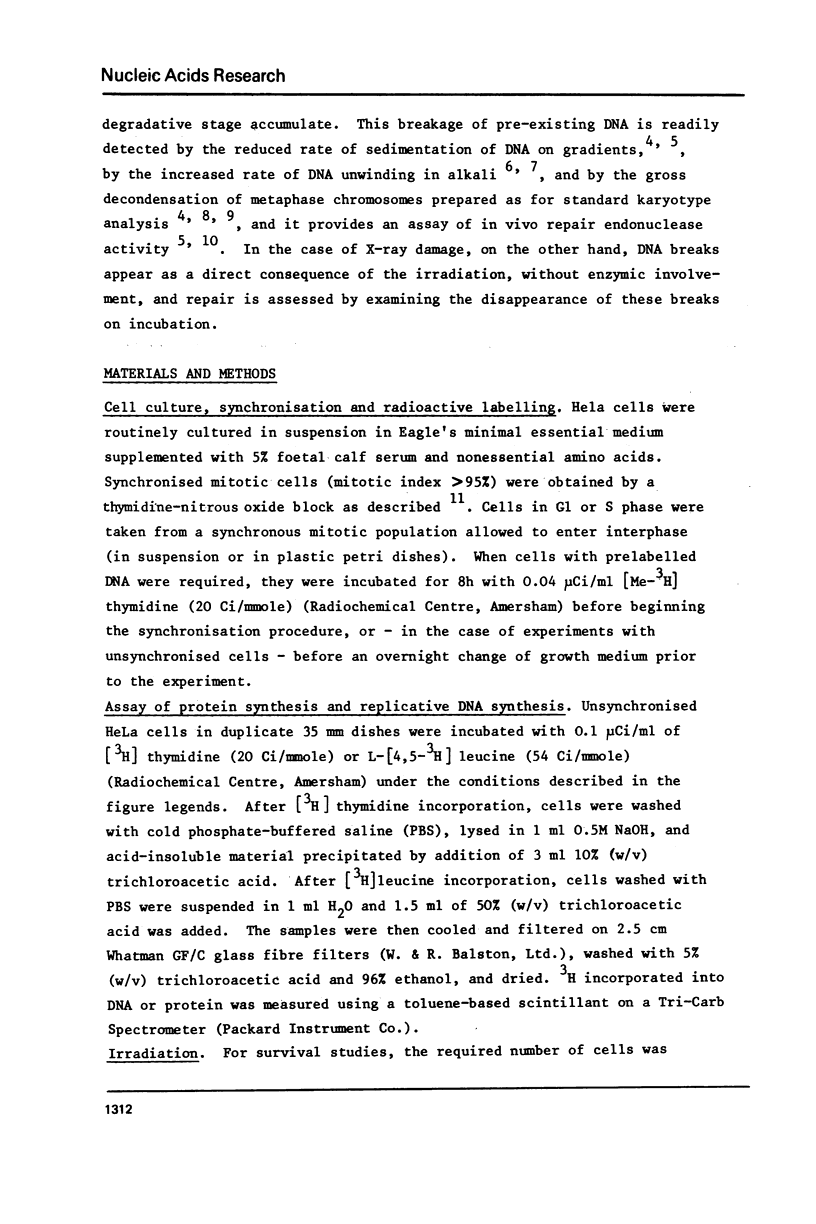
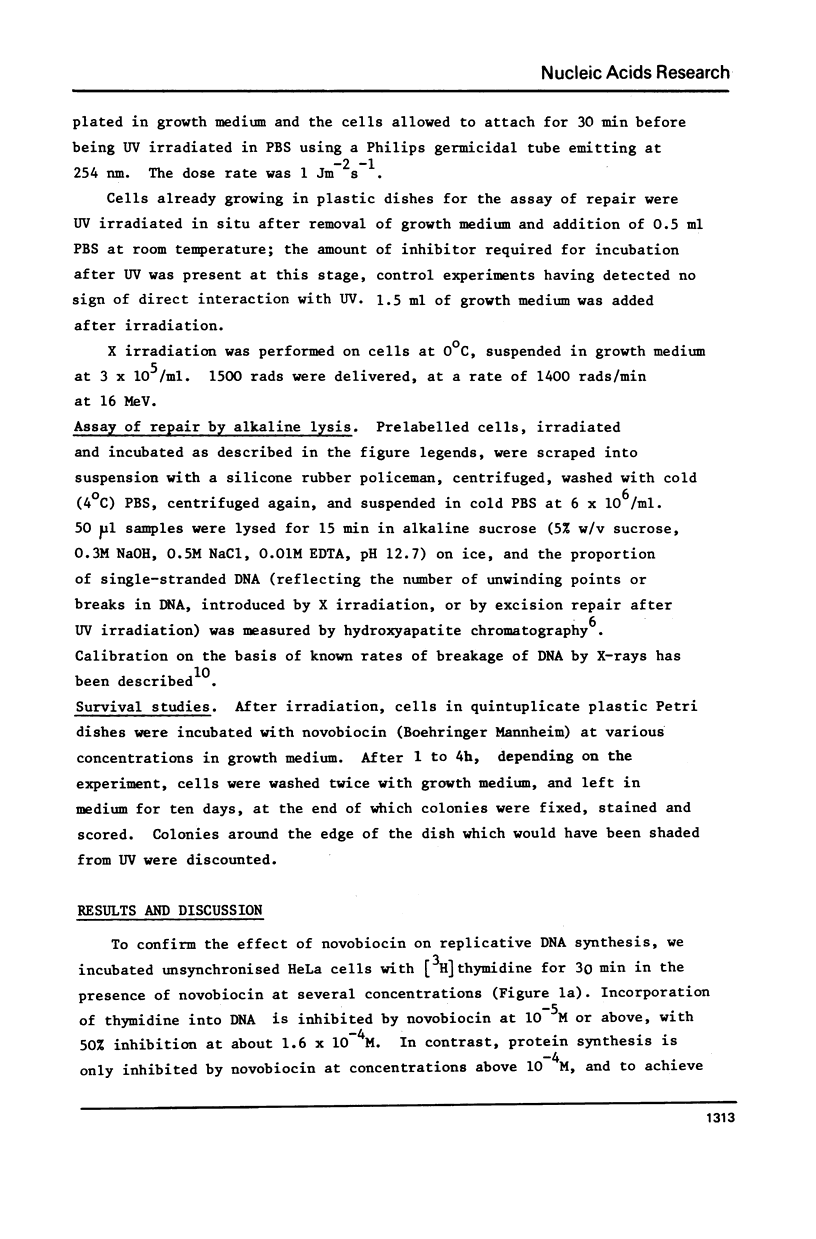
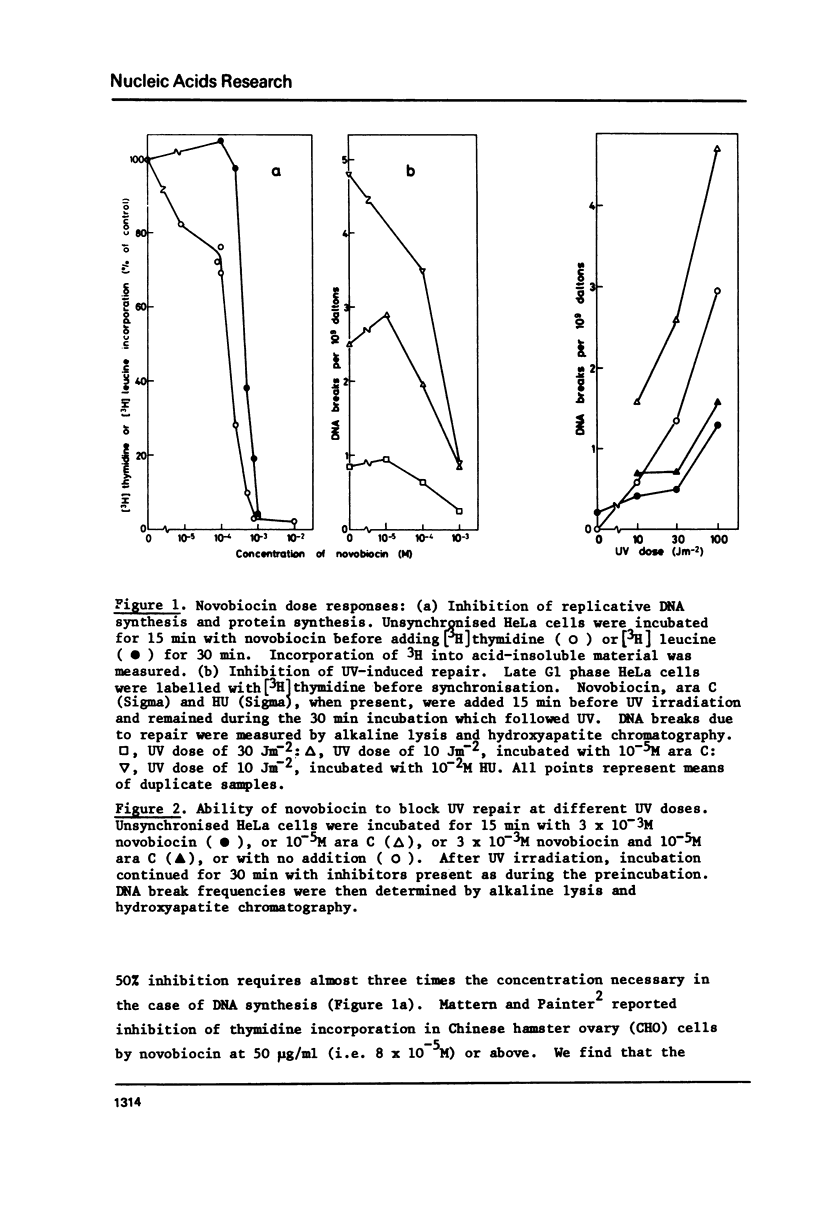
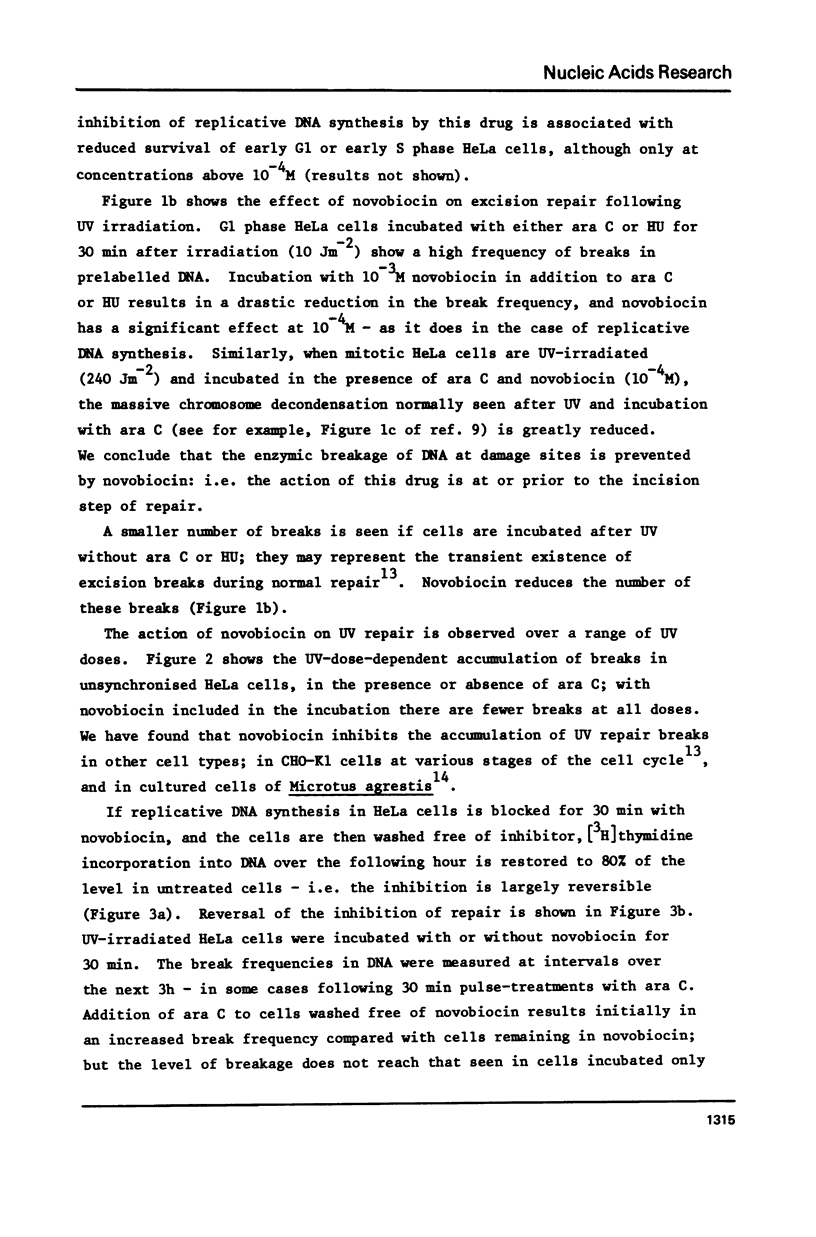
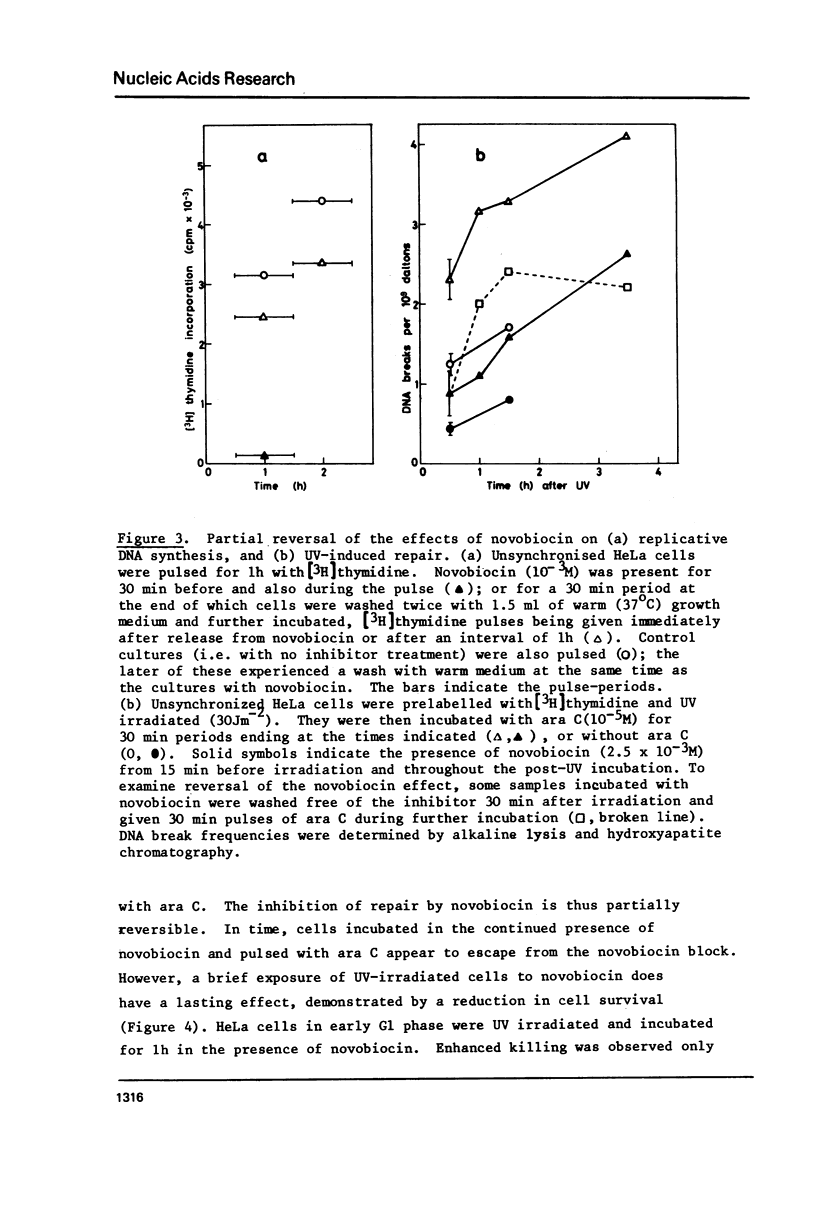
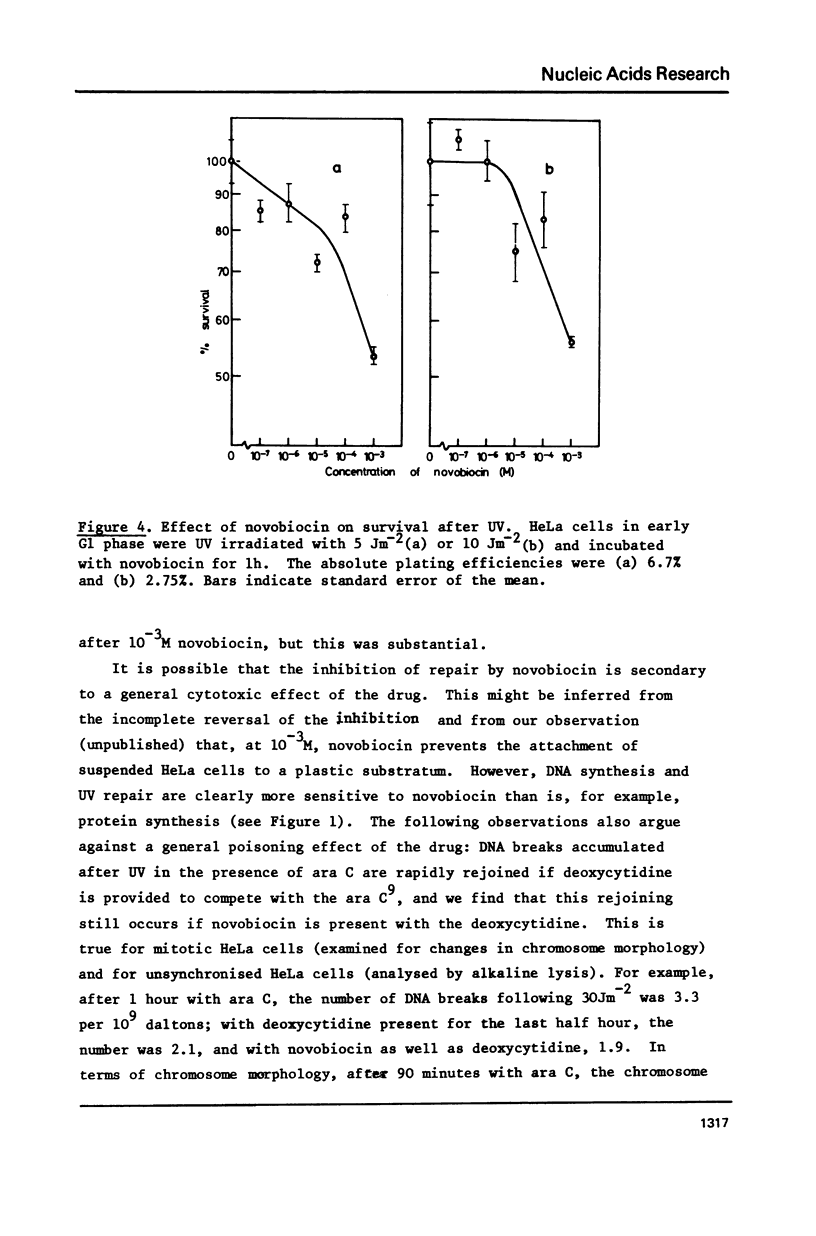
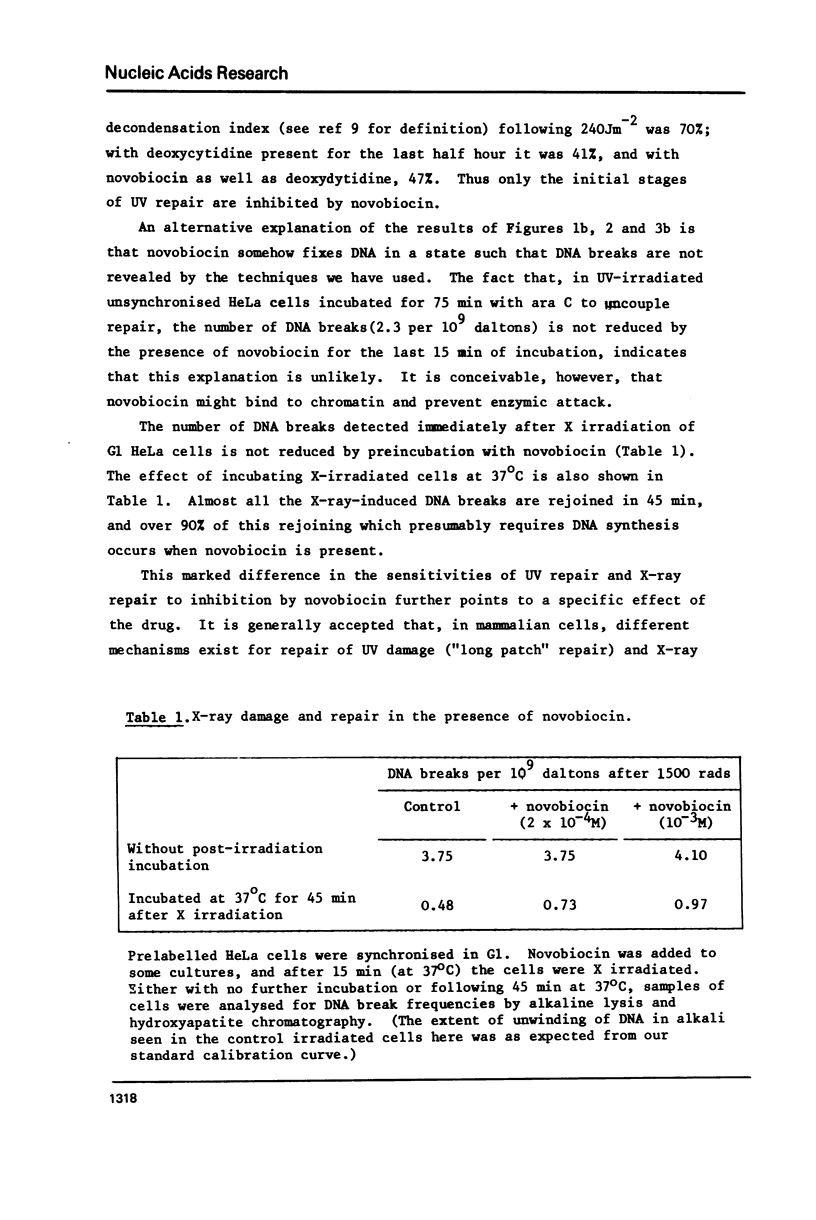
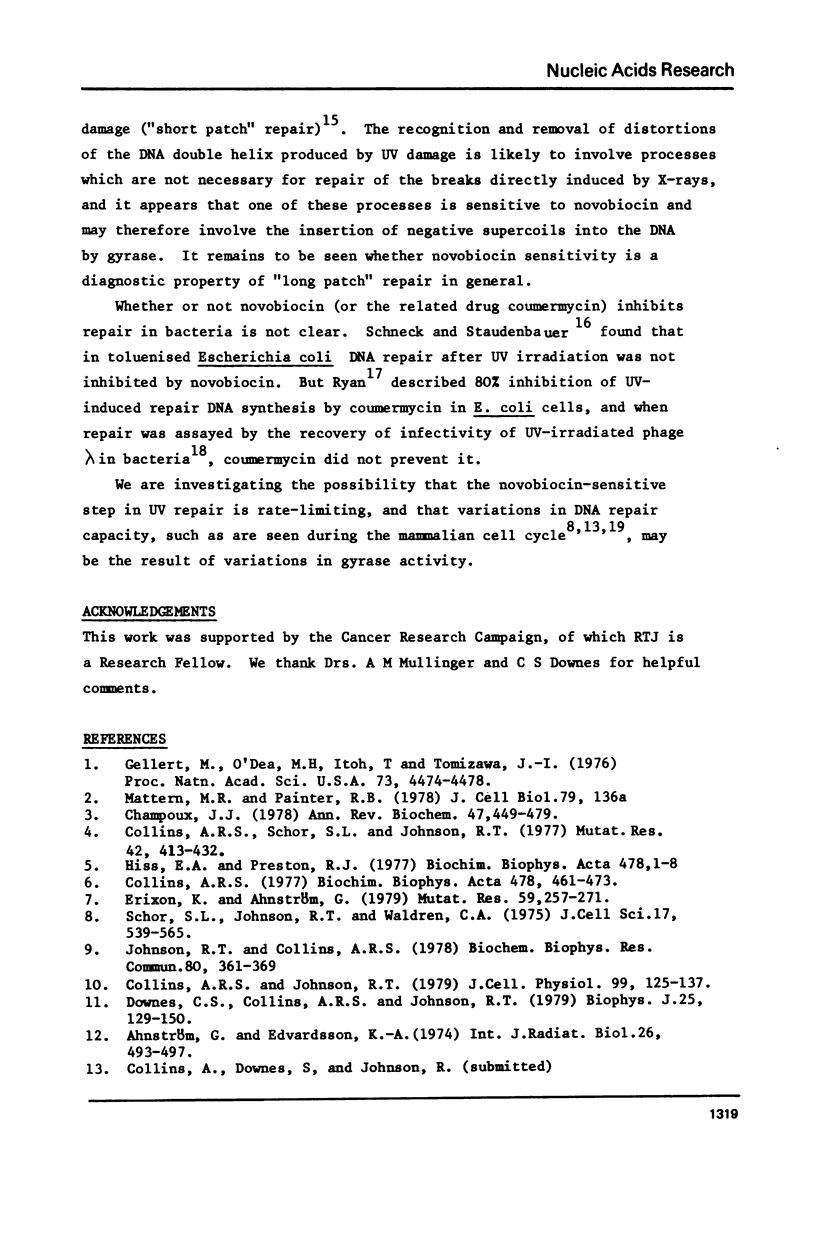
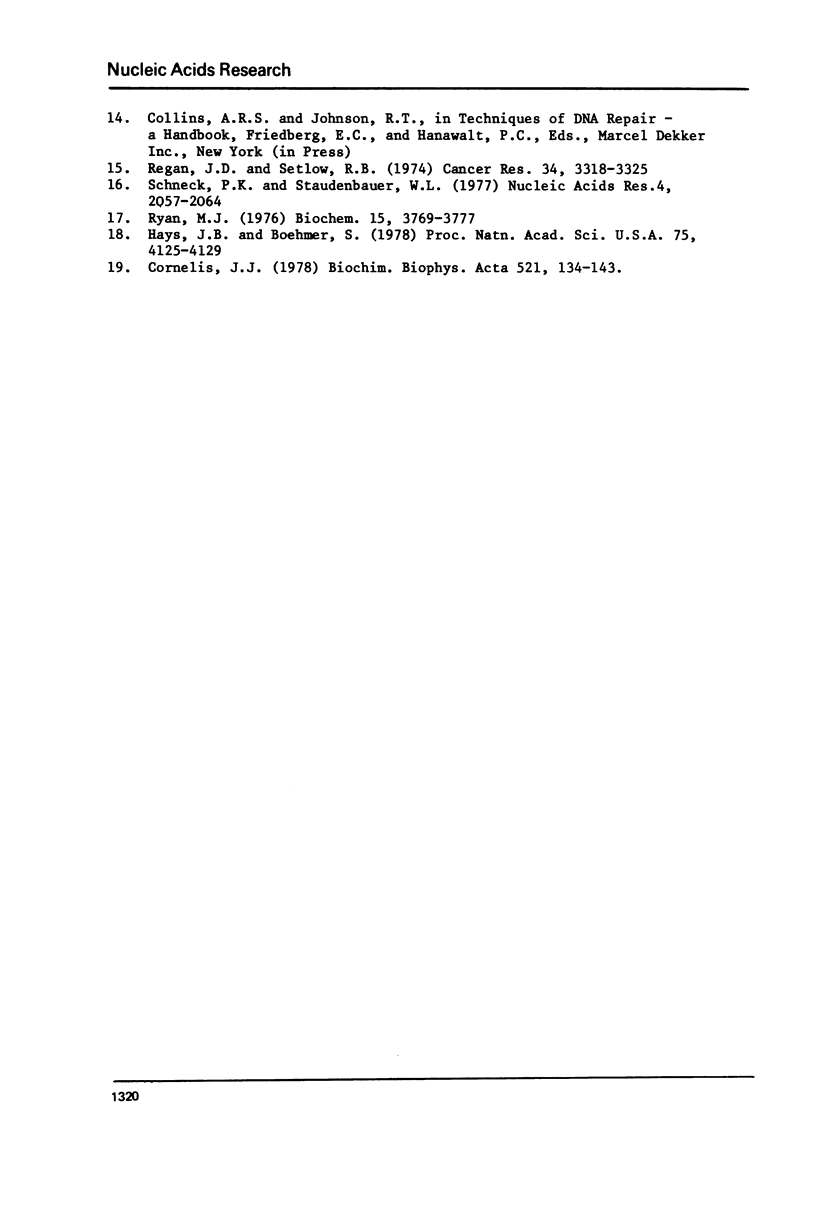
Selected References
These references are in PubMed. This may not be the complete list of references from this article.
- Ahnström G., Edvardsson K. A. Letter: Radiation-induced single-strand breaks in DNA determined by rate of alkaline strand separation and hydroxylapatite chromatography: an alternative to velocity sedimentation. Int J Radiat Biol Relat Stud Phys Chem Med. 1974 Nov;26(5):493–497. doi: 10.1080/09553007414551511. [DOI] [PubMed] [Google Scholar]
- Champoux J. J. Proteins that affect DNA conformation. Annu Rev Biochem. 1978;47:449–479. doi: 10.1146/annurev.bi.47.070178.002313. [DOI] [PubMed] [Google Scholar]
- Collins A. R. DNA damage in ultraviolet-irradiated HeLa and CHO-Kl cells examined by alkaline lysis and hydroxyapatite chromatography. Biochim Biophys Acta. 1977 Oct 18;478(4):461–473. doi: 10.1016/0005-2787(77)90101-0. [DOI] [PubMed] [Google Scholar]
- Collins A. R., Johnson R. T. Repair and survival after UV in quiescent and proliferating Microtus agrestis cells: different rates of incision and different dependence on DNA precursor supply. J Cell Physiol. 1979 Apr;99(1):125–137. doi: 10.1002/jcp.1040990114. [DOI] [PubMed] [Google Scholar]
- Collins A. R., Schor S. L., Johnson R. T. The inhibition of repair in UV irradiated human cells. Mutat Res. 1977 Mar;42(3):413–432. doi: 10.1016/s0027-5107(77)80046-8. [DOI] [PubMed] [Google Scholar]
- Cornelis J. J. The influence of inhibitors on dimer removal and repair of single-strand breaks in normal and bromodeoxyuridine substituted DNA of HeLa cells. Biochim Biophys Acta. 1978 Nov 21;521(1):134–143. doi: 10.1016/0005-2787(78)90256-3. [DOI] [PubMed] [Google Scholar]
- Downes C. S., Collins A. R., Johnson R. T. DNA damage in synchronized HeLa cells irradiated with ultraviolet. Biophys J. 1979 Jan;25(1):129–150. doi: 10.1016/S0006-3495(79)85282-0. [DOI] [PMC free article] [PubMed] [Google Scholar]
- Erixon K., Ahnström G. Single-strand breaks in DNA during repair of UV-induced damage in normal human and xeroderma pigmentosum cells as determined by alkaline DNA unwinding and hydroxylapatite chromatography: effects of hydroxyurea, 5-fluorodeoxyuridine and 1-beta-D-arabinofuranosylcytosine on the kinetics of repair. Mutat Res. 1979 Feb;59(2):257–271. doi: 10.1016/0027-5107(79)90164-7. [DOI] [PubMed] [Google Scholar]
- Gellert M., O'Dea M. H., Itoh T., Tomizawa J. Novobiocin and coumermycin inhibit DNA supercoiling catalyzed by DNA gyrase. Proc Natl Acad Sci U S A. 1976 Dec;73(12):4474–4478. doi: 10.1073/pnas.73.12.4474. [DOI] [PMC free article] [PubMed] [Google Scholar]
- Hays J. B., Boehmer S. Antagonists of DNA gyrase inhibit repair and recombination of UV-irradiated phage lambda. Proc Natl Acad Sci U S A. 1978 Sep;75(9):4125–4129. doi: 10.1073/pnas.75.9.4125. [DOI] [PMC free article] [PubMed] [Google Scholar]
- Hiss E. A., Preston R. J. The effect of cytosine arabinoside on the frequency of single-strand breaks in DNA of mammalian cells following irradiation or chemical treatment. Biochim Biophys Acta. 1977 Sep 6;478(1):1–8. doi: 10.1016/0005-2787(77)90238-6. [DOI] [PubMed] [Google Scholar]
- Johnson R. T., Collins A. R. Reversal of the changes in DNA and chromosome structure which follow the inhibition of UV-induced repair in human cells. Biochem Biophys Res Commun. 1978 Jan 30;80(2):361–369. doi: 10.1016/0006-291x(78)90685-x. [DOI] [PubMed] [Google Scholar]
- Regan J. D., Setlow R. B. Two forms of repair in the DNA of human cells damaged by chemical carcinogens and mutagens. Cancer Res. 1974 Dec;34(12):3318–3325. [PubMed] [Google Scholar]
- Ryan M. J. Coumermycin A1: A preferential inhibitor of replicative DNA synthesis in Escherichia coli. I. In vivo characterization. Biochemistry. 1976 Aug 24;15(17):3769–3777. doi: 10.1021/bi00662a020. [DOI] [PubMed] [Google Scholar]
- Schneck P. K., Staudenbauer W. L. Escherichia coli DNA synthesis in vitro: insensitivity of ATP-dependent DNA repair to inhibition by novobiocin. Nucleic Acids Res. 1977 Jun;4(6):2057–2064. doi: 10.1093/nar/4.6.2057. [DOI] [PMC free article] [PubMed] [Google Scholar]
- Schor S. L., Johnson R. T., Waldren C. A. Changes in the organization of chromosomes during the cell cycle: response to ultraviolet light. J Cell Sci. 1975 May;17(3):539–565. doi: 10.1242/jcs.17.3.539. [DOI] [PubMed] [Google Scholar]


